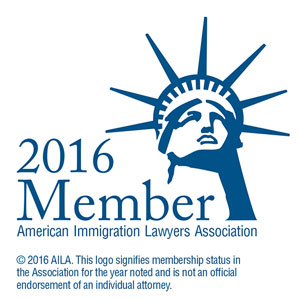By Gary Endelman and Cyrus D. Mehta
While many covet lawful permanent resident (LPR) status in the US, popularly known as the green card, since it allows them to freely live and work in the US, it can also become a burden if one remains absent from the US, which can result in the loss of this status. This happened in Lateef v. Holder, where the petitioner, a Pakistani national, argued that despite multiple long absences from the United States, she did not intend to abandon her status, which also served as the foundation for her husband’s and child’s entry into the United States. The U.S. Court of Appeals for the Sixth Circuit denied the petition for review, holding that intent alone is insufficient to maintain LPR status and that her extended periods in Pakistan, including her final trip that lasted a year and three months, supported the BIA’s finding that she had abandoned her LPR status. The court also noted that the petitioner, at the end of a long and exhausting international flight, fearful of losing her LPR status, had lied in one instance to border officials about the date of her last visit to the United States.
Circuit Judge Jane B. Stranch dissented, noting among other things that errors by U.S. immigration officials were responsible for at least some of the delays in her returning, and that the petitioner’s daughter in Pakistan had emotional and physical problems that compelled her to spend time in Pakistan to care for her.
The main lesson learned from Lateef v. Holder is that waiting outside the US with your loved ones, until they can immigrate to the US, can result in abandonment of your green card. Due to the tremendous backlogs in the family-based immigration system, it can take years before an LPR can sponsor a spouse or child to the US, thus compelling the LPR to be absent from the US until such time that the family members are issued immigrant visas. The case highlights the tensions between a global world involving frequent travel, and where families live apart in different countries, and an insular immigration system.
Lateef, a native of Pakistan, became a LPR in 1991 along with her parents and brothers. She initially went back to Pakistan to complete her final 2 years of medical school, and then returned to the US and remained for over 2 years. After Lateef married her husband in Pakistan in June 1995, she spent most of her time in Pakistan until February 2001, when she was charged with inadmissibility based on abandonment of her LPR status. Between 1995 and 2001, she returned periodically to the US to take her medical exams. Her husband was also denied a visitor visa during this time. She also gave birth to a daughter in Pakistan. Although, according to the majority her daughter was granted LPR status “as a child born during a temporary visit abroad” to an LPR under 8 C.F.R. § 211.1(b)(1), Judge Stranch’s dissenting opinion disputes this fact. Due to an error by the INS at the port of entry, according to Judge Stranch, the daughter was not granted LPR status under this special dispensation. Lateef had to file a separate I-130 petition on behalf of her daughter, which resulted in the daughter having to wait in Pakistan for many years. Lateef’s daughter developed behavioral problems whenever she came to the US to take medical exams. She was thus forced to return to Pakistan, and she last left the US in November 1999 due to her daughter’s continuing behavioral problems, where she remained there for a year and three months. Her husband and children (by then she also had a son) were granted immigrant visas in November 2000, but she stayed in Pakistan until 2001 to attend weddings.
When Lateef last arrived in the US in February 2001 after being out since November 1999, she falsely told the officer that she was last in the US in July 2000. Upon being confronted, she changed her story that she was last in the US in April 2000, which was also untrue. When being further confronted with documents found in the family’s luggage, she confessed that she was out since November 1999 and that she had previously lied to immigration officials.
Before we draw further lessons from Lateef v. Holder, we give you a primer on the law of abandonment of LPR status. For a more extensive review on this subject, we refer you to our article, Home Is Where The Card Is: How To Preserve Lawful Permanent Resident Status In A Global Economy, 13 Bender’s Immigration Bulletin 849, July 1, 2008. Essentially, an LPR must be returning from a temporary visit abroad under INA § 101(a)(27) in order to avoid a charge of abandonment. The term “temporary visit abroad” has recently been subject to interpretation by the Circuit Courts. The Ninth Circuit’s interpretation in Singh v. Reno, 113 F.3d 1512 (9th Cir. 1997) is generally followed:
A trip is a ‘temporary visit abroad’ if (a) it is for a relatively short period, fixed by some early event; or (b) the trip will terminate upon the occurrence of an event that has a reasonable possibility of occurring within a relatively short period of time.”If as in (b) “the length of the visit is contingent upon the occurrence of an event and is not fixed in time and if the event does not occur within a relatively short period of time, the visit will be considered a “temporary visit abroad” only if the alien has a continuous, uninterrupted intention to return to the United States during the visit.
Singh v. Reno is worth further elaboration as the facts in this case are somewhat analogous to Lateef v. Holder. Singh obtained lawful permanent residence through the special agricultural worker program on December 1, 1990. From that date till the initiation of the proceedings on July 8, 1993, Singh spent less than one-third of his time in the US. In fact, he spent time with his wife and daughter in the United Kingdom who were waiting for their family-based immigrant visa petition to materialize. During the time Singh spend in the US, he worked sporadically for a restaurant in California, and lived in temporary housing provided by the employer. Singh also applied for a visitor visa at the US consulate in London and entered the US four times on that visa after he obtained permanent residency in the UK. The Ninth Circuit held that Singh’s long visits to the UK did not qualify as a temporary visit, even though he was never out of the US for more than a year, and upheld the Board’s decision affirming his abandonment of LPR.
In a scathing dissent, Judge Reinhardt criticized the majority for failing to consider that Singh’s motive for spending time abroad was due to the wait for his wife and daughter to gain immigration status. Moreover, the dissenting judge disagreed with the majority that the wife and spouse were free to reside in the US while waiting for their immigration status.
Another important case is Hana v. Gonzales, 400 F.3d 472 (6th Cir. 2005), which in turn drew from Singh v. Reno. Although the facts in Hana v. Gonzales, are similar to Singh, the Sixth Circuit found that Hana, an Iraqi national, did not abandon her status. On May 22, 1992, Hana was granted LPR status upon which she immediately filed immigrant visa petitions for her husband and four children. A few weeks later, on July 19, 1992, Hana returned to Iraq, and to her job as an inspector at the Central Bank of Iraq under the Saddam Hussein regime. Hana was compelled to return to Iraq to work because she was afraid that the government would hurt her family. Upon obtaining a reentry permit, Hana spent in the next two years in Iraq with her family and to care for her terminally ill mother in law. Two weeks prior to the expiration of her re-entry permit in December 1996, Hana returned to the US but was detained and charged with inadmissibility as an immigrant without a valid visa. Hana admitted that she had never paid income tax in the US and had no property in this country, but had initially entered with $10,000 in jewelry and money, which she gave to her brother so that she could ultimately purchase a home and car, and provide for her children when they arrived in the US.
While ruling in Hana’s favor, the Sixth Circuit emphasized that it must take into account the totality of the alien’s circumstances in addition to the two-part test established in Singh v. Reno to determine what constitutes a temporary visit abroad. Thus, while Hana did not possess family, property or job in the US, the Court held that she still had an intent to return to the US upon the materialization of her family members’ immigration visa petitions. It appears that the Sixth Circuit was influenced by Hana’s decision to remain in Iraq with her family to ensure that they were not harmed by a brutal regime’s henchmen and for caring for her terminally ill mother-in-law. The Sixth Circuit distinguished Singh v. Reno, by observing that Singh’s family, even though not free to reside in the US, could freely travel between the two countries which were relatively safe democratic nations, although the Court acknowledged that Singh was a “close case.” Clearly, Hana is a better decision as it recognizes an LPR’s need to remain with family overseas, and is also more understanding of the realities of the backlogs in family-based immigration, along with the difficulty that sponsored family members may have in obtaining visitor visas to the United States as well as the political and economic realities that might hinder one’s ability to return to the US quickly.
Lateef v. Holder is also from the Sixth Circuit, and Lateef sought to show that her case was similar to Hana, but the majority thought otherwise. Unlike the Hana petitioner, who was forced to remain in Iraq to protect her family from a brutal dictatorship, the Lateef court thought that Pakistan was a free country that allowed its people to travel. Also compare Hana’s intent to return to the US upon the immigration of her relatives, which the Sixth Circuit paid attention to despite her lack of other ties, with the refusal of the Sixth Circuit to pay similar deference to Lateef’s intent as a controlling factor. It appears that the Sixth Circuit thought that Lateef’s case was more like Singh who could freely travel between two democratic countries, the United Kingdom and the US, even though they had relatives who were waiting in the preference system for immigrant visas. While this is a refreshing observation on Pakistan, we know anecdotally that Pakistani nationals do not otherwise fare too well in our immigration system. Their applications for routine immigration benefits get scrutinized more than others through the prism of national security, and they are more amenable to be placed in removal proceedings notwithstanding the new DHS prosecutorial discretion policy set forth in the Morton Memo of June 17, 2011. It is true that Lateef did not have a reentry permit, unlike Hana, when she returned to the US in February 2011 and even lied about the last time she came back to the US. This may have cut against her, but the misrepresentation would not have been material, and thus an additional ground of inadmissibility, if she had not abandoned her LPR status. Also, a reentry permit is not an essential prerequisite for maintaining LPR status. In yet another decision involving a Pakistani national, Moin v. Ashcroft, 335 F.3d 415 (5th Cir. 2003), the petitioner, after obtaining LPR status, left for Pakistan to marry and spent the majority of the next several years with her husband and children in Pakistan. Even though Moin had a sick child who died after barely one year and had a reentry permit, the fact that she spent most of the time in Pakistan without an intent to return within a relatively short period caused the Fifth Circuit to affirm the abandonment of her LPR status. The Fifth Circuit observed that “a reentry permit, in and of itself, does not prevent a finding that an alien has abandoned her permanent residency status.” Indeed, this lesson is one that is poorly understood by LPRs who see the re-entry permit as offering the absolute assurance of retention. The Lateef court, in finding that the petitioner had abandoned LPR status was more influenced by Moin and Singh than Hana.
Still Judge Stranch’s dissent in Lateef has considerable moral force like Judge Reinhardt’s dissent in Singh. Green card holders should not be deprived of their status primarily because they reside abroad with family members whom they have sponsored under our creaky immigration system. In Lateef, it appears that there was also an error with respect to her infant daughter being expeditiously granted LPR status at the airport under the special dispensation in 8 C.F.R. § 211.1(b)(1). Her daughter thus was forced to stay in Pakistan until the regular immigrant visa processing for a few years, and Lateef needed to be with her daughter in Pakistan due to continuing behavioral problems. Even though the court opined that Lateef and her family were free to travel, her husband was denied a tourist visa. This is often the case when a family member is being sponsored for a green card, and the tourist visa is routinely denied on the ground that the family member is wrongly suspected of being an intending immigrant and planning to overstay the visa. Moreover, the court seemed to be impressed by the fact that Hana brought $10,000 worth of valuables and cash with her to purchase a home and a car in the US when she finally would come and reside in the US. But the court glaringly missed the investment in time that Lateef was spending taking medical exams in the US that would qualify her to practice as a physician and establish a career in the US. It is clear that Lateef was expending her own human capital in the US even though she did not bring physical assets to the US like Hana, which appeared rather modest. On the other hand, Lateef’s investment of time in obtaining a medical license to practice in the US was impressive.
The unfortunate holding in Lateef v. Holder again compels us to offer our proposal that, if adopted, will change the law on preservation of LPR status in a really big way: green card holders, like US citizens, should not be presumed to abandon their status without a tangible manifestation or expression of informed consent. The significance of LPR status would be greatly enhanced if a presumption existed in favor of retention of status, notwithstanding the commission of certain acts that might suggest a contrary intent. US citizens now enjoy this same presumption and there is no reason why resident aliens should not as well. It is neither sound nor sensible to assume that naturalized Americans have a stronger or more meaningful attachment to this country than lawful permanent residents; indeed, there are numerous anecdotal reasons to commend the opposite conclusion. Extended absence from the US, without more, should never serve as the basis for abandonment; in a global economy, where an LPR may have to reside abroad with family members until their immigration process is completed or where international relocations are the price of career advancement or even job retention, the law should and must provide that no LPR can be stripped of their green card on the basis of abandonment unless he or she clearly states an unmistakable intention to give it up. No inference from proven conduct would be possible absent clear evidence that such was the desired and intended consequence. Application of this presumption would properly reflect the profound importance of lawful resident alien status while serving as symbolic recognition of the vast contributions that such permanent residents have made to their adopted home. How is the nation well served when we presume that a citizen does not intend the consequences of a potentially expatriating act while denying the LPR his or her right to rely upon the very same presumption? What reason is there to believe that a US citizen is more invested in keeping citizenship than an LPR in preserving the green card? Do we seek to punish the lawful permanent resident for retaining original loyalties and not taking that one, final, fateful step signifying that they have truly become one of us, making our cause their own?
So long as the green card holder has not violated our laws, or otherwise subjected themselves to justifiable removal, no public interest is advanced when the law refuses to shield permanent residents from involuntary loss of status. Our liberties are not made more secure, our federal coffers do not swell with more tax dollars, our enemies are not chastened nor our friends reassured from such an anomalous state of affairs. The genius of the American constitutional arrangement, that which has provided it with the equipoise so prized in times of crisis, lies in its ability to give all those affected by its operation a stake in society. As Professor Alexander M. Bickel taught us in Citizenship in the American Constitution, 15 Arizona Law Review 369 (1973), the value of citizenship is most authentically reaffirmed when the rights of citizens are least exalted above all others. No one, LPRs included, should have to choose between loyalty to family and retention of status. The true meaning of America lies elsewhere. F. Scott Fitzgerald in The Crack-Up (1933) points the way:
France was a land, England a people but America was somehow different… It had about it still the quality of an idea…It was, above all else, a willingness of the heart.




